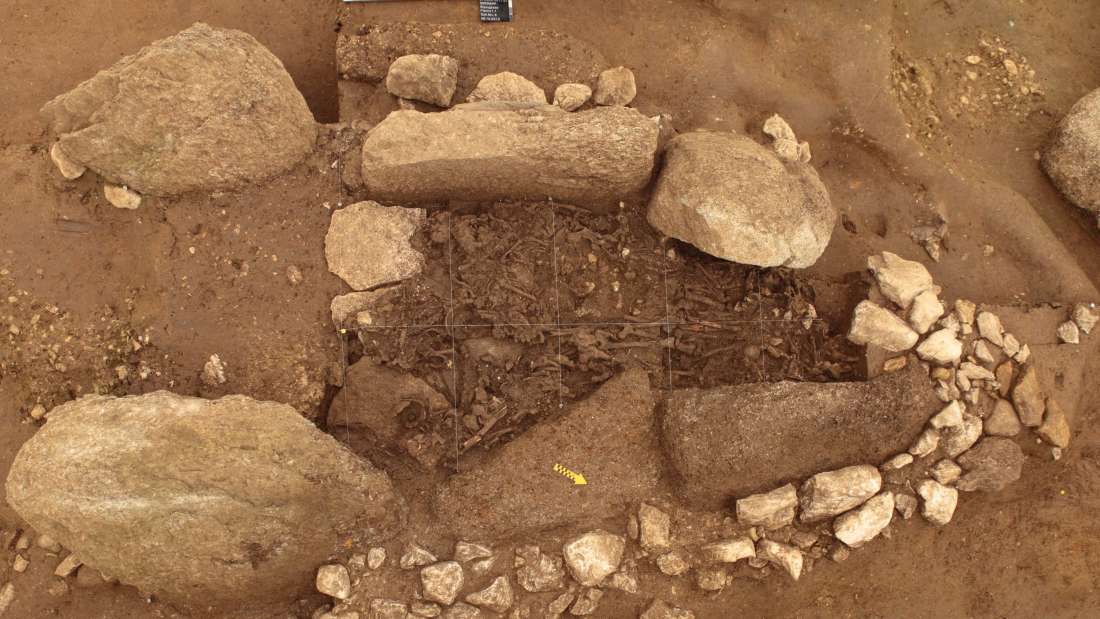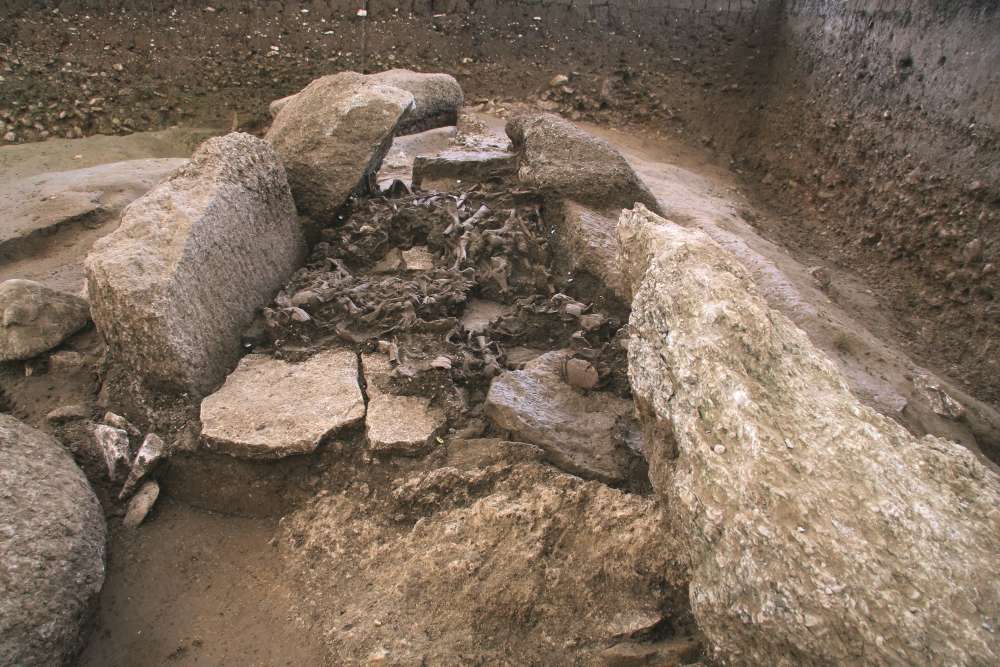乳糖不耐症在欧洲遗传中已经有几千年的历史了
乳糖不耐症在欧洲遗传中已经有几千年的历史了
Ancient cattle and sheep farmers from modern-day Ukraine gradually mixed with Europeans as far back as 2800 BCE, and among them was the oldest known Europeans to have genetic characteristics of lactose intolerance.
早在公元前2800年,来自今天乌克兰的古代牛羊农民就逐渐与欧洲人融合在一起,其中包括已知的最古老的具有乳糖不耐症遗传特征的欧洲人。
Genetic analysis and radiocarbon dating of nearly 100 ancient skeletal remains from Neolithic settlements in Switzerland is lending insight into the continent’s earliest inhabitants, both illuminating where they came from and how they lived, according to a new study published in Nature Communications.
发表在《自然通讯》杂志上的一项新研究称,对瑞士新石器时代(ne石器时代)定居点的近100具古代遗骸进行基因分析和放射性碳测年,有助于深入了解该大陆最早的居民,这两项研究都揭示了他们的来源和生活方式。

Madison Dapcevich
Switzerland’s rich archaeological record makes it a prime location to study the origins of Europeans. Neolithic settlements are found throughout Central Europe, from lakeshores and bogs to Alpine valleys and high mountain spaces. Previous studies have shown that during the Neolithic period, around the time when civilizations started to rise about 12,000 years ago, drastic changes occurred as sheep and cattle farmers arrived from the Pontic-Caspian steppe in modern Ukraine. At this time, an emergence of Corded Ware Complex (CWC) cultural groups began, groups believed to be the common ancestor of Celtic, Germanic, Baltic, and Slavic groups. But exactly when these migrants arrived in Central Europe and how they mixed with the residents at the time has largely remained a mystery.
瑞士丰富的考古记录使它成为研究欧洲人起源的最佳地点。新石器时代的定居点遍布中欧,从湖岸和沼泽到高山峡谷和高山空间。之前的研究表明,在新石器时代,大约在12000年前,人类文明开始崛起的时候,当绵羊和牛的农民从现在乌克兰的里海大草原来到这里时,发生了巨大的变化。在这个时候,出现了绳纹陶器复合体(CWC)文化群体,这些群体被认为是凯尔特、日耳曼、波罗的海和斯拉夫群体的共同祖先。但这些移民究竟是何时抵达中欧的,以及他们当时是如何与当地居民相处的,在很大程度上仍是个谜。
To begin to piece the ancient puzzle together, a team of researchers from the University of Tübingen, the University of Bern, and the Max Planck Institute for the Science of Human History radiocarbon-dated bones from 96 ancient skeletons across 13 Neolithic and Bronze Age sites in Switzerland, southern Germany, and the Alsace region of France. Mitochondrial genomes were completely reconstructed and compared against nearly 400 genomic information held within a databank.
为了解开这个古老的谜团,来自图宾根大学、伯尔尼大学和马克斯·普朗克人类历史科学研究所的一组研究人员对来自瑞士、德国南部和法国阿尔萨斯地区13个新石器时代和青铜时代遗址的96具古代骨骼进行了放射性碳测定。线粒体基因组完全重建,并与数据库中保存的近400个基因组信息进行比较。

Layer of the human remains found in situ in the Dolmen of Oberbipp in Switzerland. Archäologischer Dienst des Kanton Bern (Switzerland), Marianne Ramstein
The researchers found that the new group arrived as early as 2800 BCE but their genetic dispersal was complex and gradual. By and large, social and family structures remained biologically the same before and after people arrived from the Pontic-Caspian steppe, suggesting that the different societies did not intermix.
研究人员发现,这个新群体早在公元前2800年就出现了,但他们的遗传扩散是复杂而渐进的。总的来说,从池塘-里海大草原来的人之前和之后,社会和家庭结构在生物学上保持不变,这表明不同的社会没有混合。
"Remarkably, we identified several female individuals without any detectable steppe-related ancestry up to 1,000 years after this ancestry arrives in the region," said lead author Anja Furtwängler of the University of Tübingen's Institute for Archaeological Sciences, in a statement.
研究报告的主要撰写人、图宾根大学考古科学研究所的安雅•弗特文格勒在一份声明中说:“值得注意的是,在这些女性祖先来到这一地区1000多年后,我们发现了一些没有任何可检测到的与祖先进化有关的女性祖先。”
Further genetic testing and analysis of stable isotopes determined that many societies were patrilocal, meaning that the men stayed where they were born and women came from distant families yet still did not have steppe ancestry.
进一步的基因测试和对稳定同位素的分析确定,许多社会是父系社会,这意味着男性呆在他们出生的地方,而女性来自遥远的家庭,但仍然没有草原祖先。
"Since the parents of the mobile females in our study couldn't have had steppe-related ancestry either, it remains to be shown where in Central Europe such populations were present, possibly in the Alpine mountain valleys that were less connected to the lower lands," said Johannes Krause, director of the Department of Archaeogenetics at MPI-SHH and senior author of the study.
“因为在我们的研究中,这些移动的雌性动物的父母也不可能有与阶梯式进化相关的祖先,所以在中欧的哪些地方存在这样的种群,可能是在与低地联系较少的高山峡谷中,还有待发现。”MPI-SHH考古遗传学系主任、该研究的资深作者约翰内斯·克劳斯说。
The study also presents one of the earliest evidence of adult lactose intolerance in Europe, dating back to around 2100 BCE, a genetic mutation that is of “high frequency” in Europe today but is largely absent in late and middle Neolithic samples. This suggests that lactose intolerance increased in frequency at the end of the Neolithic period and increased after the beginning of the Bronze Age.
该研究还提出了欧洲最早的成人乳糖不耐症的证据之一,可以追溯到公元前2100年左右,这是一种基因突变,在今天的欧洲是“高频率”的,但在新石器时代晚期和中期的样本中基本不存在。这表明乳糖不耐症在新石器时代末期增加,在青铜时代开始后增加。
- 频道推荐
- |
- 全站推荐
- 推荐下载
- 网站推荐


















